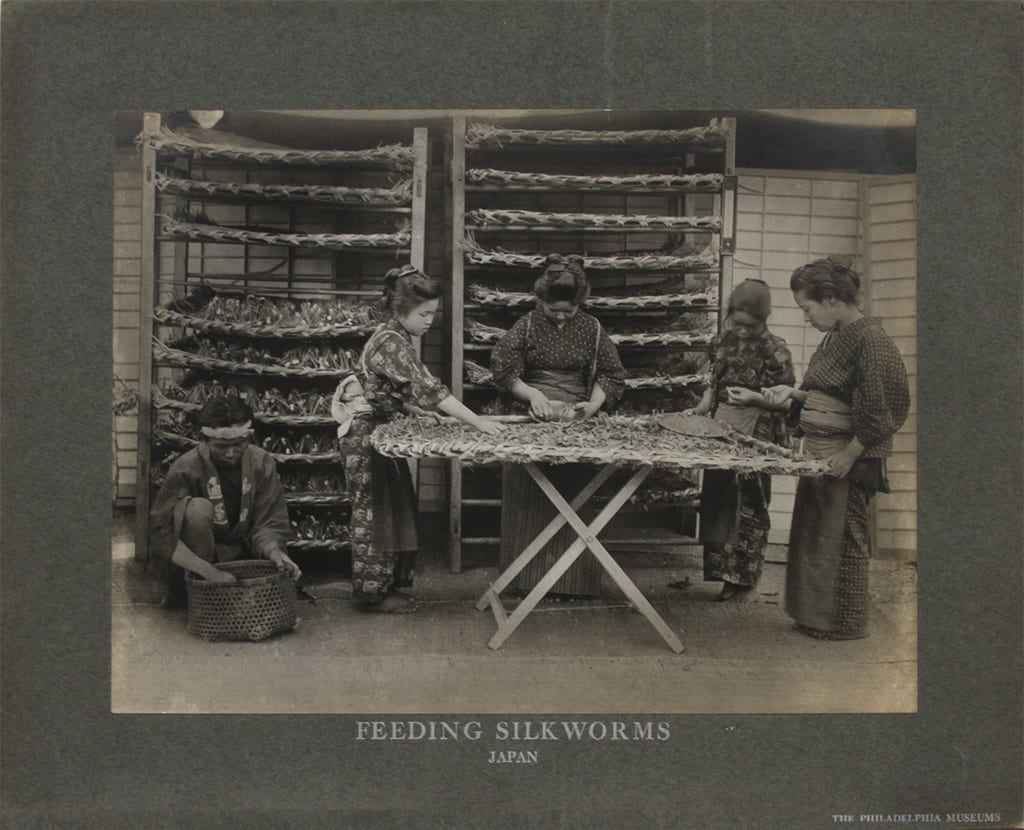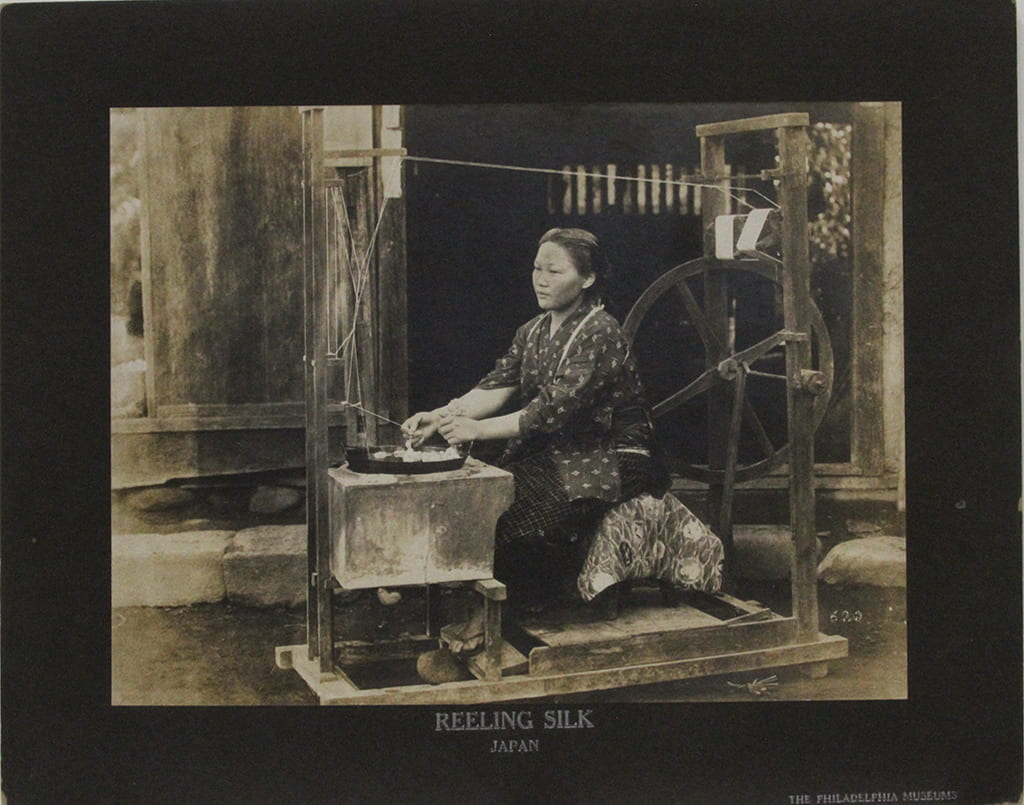Three cabinet cards depict specific stages of Japanese silk production: raising worms, reeling thread, and weaving cloth. The cards were created by the Philadelphia Commercial Museum, which opened in 1893 with the aim to extend America’s trading empire by instructing the public in global markets, tastes, and methods of manufacturing. The museum developed a collection of raw materials, products, and machines, as well as photographs to illustrate complex industries. The Japan series was produced specifically for the teaching of commercial geography in Pennsylvania’s public schools.[33] It aimed to prepare America’s future brokers and manufacturers to “conquer” Asia through overseas commerce.[34]
While the Philadelphia Commercial Museum kept no record of attributions, the original sericulture photographs can be identified as the work of leading Japanese makers Kusakabe Kimbei of Yokohama (Feeding Silkworms), T. Enami of Yokohama (Reeling Silk), and Ogawa Kazumasa of Tokyo (Weaving).[35] These entrepreneurs were determined to take advantage of lucrative foreign markets by “selling” the myth of Japan’s pre-industrial culture of craft, epitomized by silk making, to Western travelers. However, the museum appropriated their images to contrary ends, to strengthen America’s trading position. The cards thus embody the competitive nature of the world economy during the Gilded Age as well as the shifting functions of Japanese photographs, from souvenirs to instruments of commercial education.
Image credits:
Kusakabe Kimbei (Japanese, 1841–1934), Feeding Silkworms, Japan; T. Enami (Japanese, 1859–1929), Reeling Silk, Japan; and Ogawa Kazumasa (Japanese, 1860–1929), Weaving, Japan, published c. 1905 by the Philadelphia Museums. Black-and-white photographs mounted on board, 7 x 9 1/4 in. each. Mildred Lane Kemper Art Museum, Washington University in St. Louis. Gifts of Laurie Wilson, Robert Frerck, and family, 2015.


